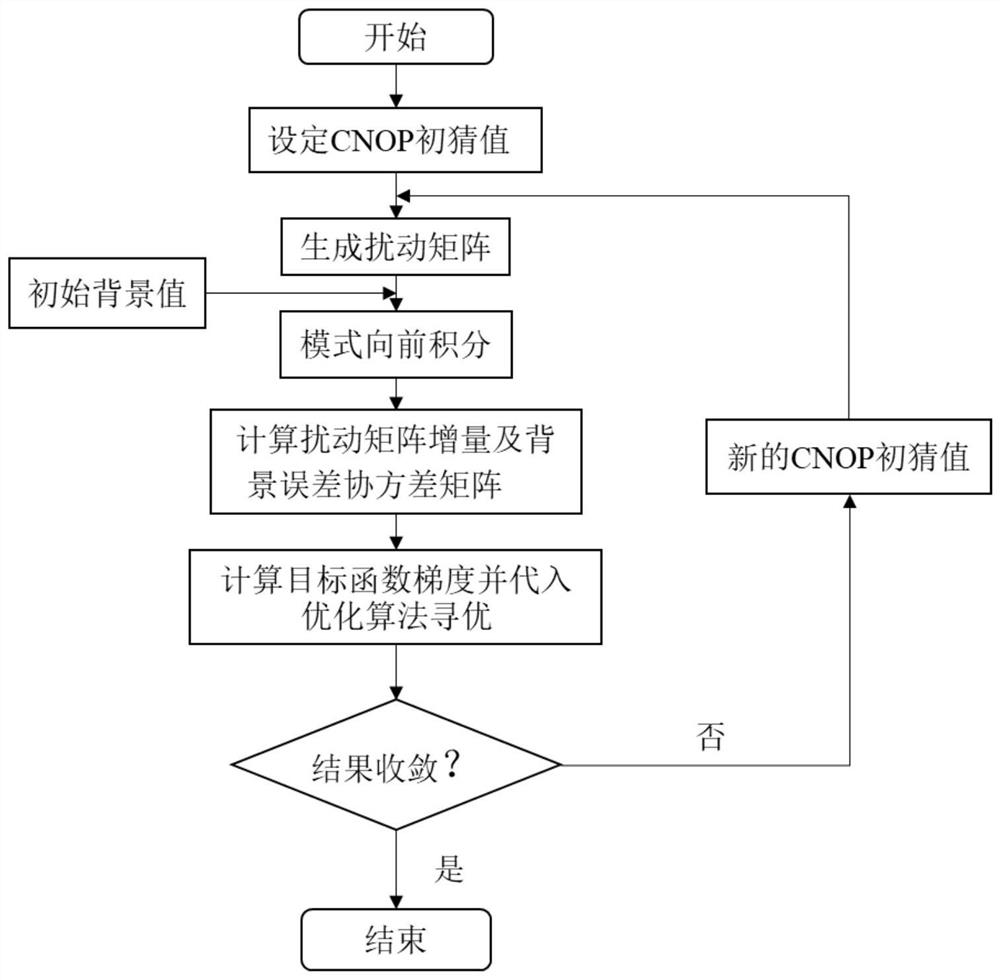Method for solving conditional nonlinear optimal disturbance based on analysis of four-dimensional set variation
A perturbation method and nonlinear technology, applied in climate sustainability, instrumentation, data processing applications, etc., can solve the problems of a large amount of manpower and material resources, poor portability, limitations, etc., to achieve improved applicability, accurate solution, and portability good sex effect
- Summary
- Abstract
- Description
- Claims
- Application Information
AI Technical Summary
Problems solved by technology
Method used
Image
Examples
Embodiment Construction
[0013] The method for solving conditional nonlinear optimal disturbance based on analytic four-dimensional ensemble variation of the present invention will be described in detail below in conjunction with the embodiments and drawings.
[0014] Such as figure 1 As shown, the method for solving conditional nonlinear optimal disturbance based on analytical four-dimensional ensemble variation of the present invention includes the following steps:
[0015] 1) Construct the conditional nonlinear optimal perturbation (CNOP) objective function according to the ocean forecasting model and obtain the gradient formula of the objective function; including:
[0016] (1) The formula of the ocean forecast model is given:
[0017]
[0018] In the formula, X is the background state of the ocean, including sea surface temperature, salinity, and current velocity; t is the time variable, and F is the nonlinear partial differential operator; X 0 is the ocean background state at the initial mo...
PUM
 Login to View More
Login to View More Abstract
Description
Claims
Application Information
 Login to View More
Login to View More - R&D
- Intellectual Property
- Life Sciences
- Materials
- Tech Scout
- Unparalleled Data Quality
- Higher Quality Content
- 60% Fewer Hallucinations
Browse by: Latest US Patents, China's latest patents, Technical Efficacy Thesaurus, Application Domain, Technology Topic, Popular Technical Reports.
© 2025 PatSnap. All rights reserved.Legal|Privacy policy|Modern Slavery Act Transparency Statement|Sitemap|About US| Contact US: help@patsnap.com



